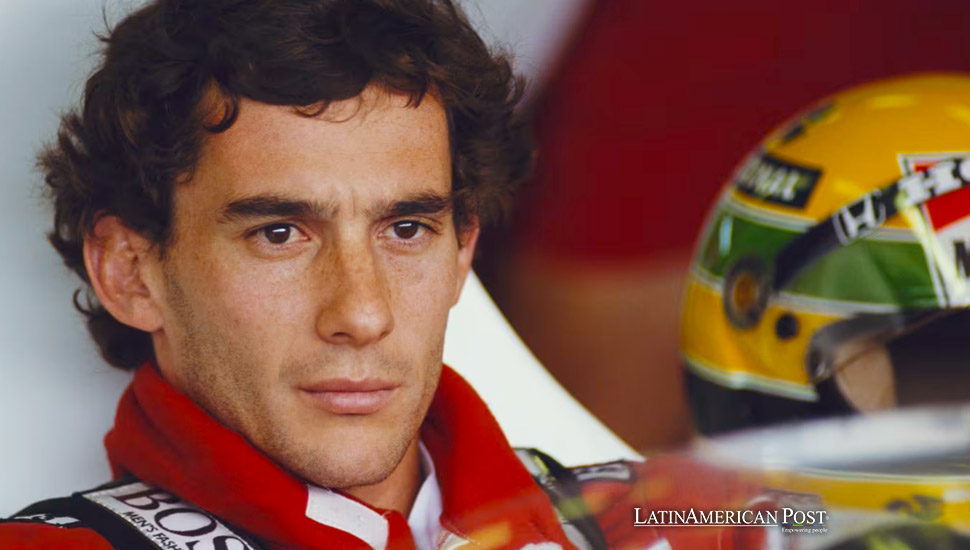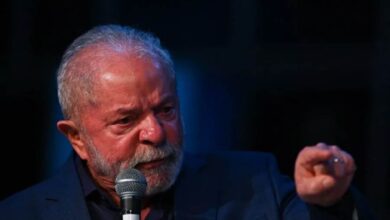Ayrton Senna: Brazil’s Legendary F1 Champion Season by Season

Ayrton Senna, the iconic Brazilian Formula 1 driver, left an indelible mark on the sport with his extraordinary skill and unwavering determination. From his debut in 1984 to his tragic death in 1994, Senna’s career was marked by incredible victories, intense rivalries, and a relentless pursuit of perfection.
Ayrton Senna’s journey in Formula 1 began in 1984 when he debuted with the Toleman team at the Brazilian Grand Prix. The young driver from São Paulo was already known for his karting prowess and had been making waves in the lower formulae, but it was in F1 where his talent would genuinely shine. Senna’s first season in F1 was marked by impressive performances, particularly given the limitations of the Toleman car. He finished the season ninth in the championship, with three podiums and a memorable second-place finish in a rain-soaked Monaco Grand Prix that would foreshadow his future dominance on the iconic street circuit.
In 1985, Senna moved to Lotus, a team with a rich history but had not won a race since 1982. Driving the Lotus-Renault 97T, Senna quickly proved he was a force to be reckoned with. He secured his first F1 victory in the Portuguese Grand Prix at Estoril, a race under torrential rain. Senna’s mastery of wet conditions became a defining feature of his driving style, and his performance at Estoril indicated that a new star had arrived in F1. That season, Senna finished fourth in the championship with two wins and seven pole positions.
The following year, Senna continued to build on his success with Lotus. Although the team struggled with reliability, Senna’s speed was undeniable. He secured eight pole positions and two victories. Still, the championship eluded him again, with the title fight dominated by Alain Prost’s McLaren and the Williams-Honda duo of Nigel Mansell and Nelson Piquet. Despite the challenges, Senna’s reputation as one of the fastest drivers on the grid was firmly established.
Dominance and Rivalries: The Peak of Senna’s Career
Senna’s career took a significant turn in 1988 when he joined McLaren, a team that had dominated F1 in the preceding years. Partnered with Alain Prost, Senna was now in a car capable of competing in the world championship. The McLaren-Honda MP4/4, widely regarded as one of the most excellent F1 cars ever built, allowed Senna to showcase his immense talent. He won eight races that season, securing his first world championship despite Prost scoring more points overall. The key to Senna’s triumph was the F1 rule that only the best 11 results counted toward the tournament, allowing him to edge out his teammate by just three points.
The rivalry between Senna and Prost, already simmering in 1988, exploded into full-blown hate in 1989. The tension between the two drivers peaked at the Japanese Grand Prix in Suzuka, where a controversial collision resulted in Prost winning the championship after Senna was disqualified for rejoining the track incorrectly. The incident remains one of the most infamous moments in F1 history and set the stage for an even more intense rivalry in the years to come.
In 1990, Senna and Prost were again locked in a fierce battle for the title, but this time, Prost was driving for Ferrari. The season he has culminated in another dramatic showdown at Suzuka, where Senna deliberately collided with Prost at the first corner, ensuring that he would win the championship. The controversial move underscored Senna’s determination to win at any cost. With six victories that season, Senna secured his second world championship.
Senna continued his dominance in 1991, winning seven races and securing his third and final world championship. The McLaren-Honda partnership remained strong, and Senna’s relentless pursuit of perfection drove him to new heights. However, the competition intensified, with Williams emerging as a formidable challenger. Despite this, Senna’s victory at his home race, the Brazilian Grand Prix, was one of the most emotional moments of his career. The win was a testament to his incredible skill and determination, as he overcame a malfunctioning gearbox to take the checkered flag.
The Final Years: Triumphs and Tragedy
By 1992, the balance of power in F1 had shifted. Williams dominated the season with its advanced active suspension technology, and Senna’s McLaren was no longer the fastest car on the grid. Despite this, Senna secured three victories, including a memorable win at the Monaco Grand Prix, where he outdrove Nigel Mansell’s superior, Williams. Senna finished the season fourth in the championship, but it was clear that his time at the top was being challenged by a new generation of drivers, including Michael Schumacher.
In 1993, Senna faced yet another challenging season. With Honda pulling out of F1, McLaren was forced to use customers’ Ford engines, which were less potent than their rivals. Despite these limitations, Senna produced some of the most remarkable performances of his career. His victory at the European Grand Prix at Donington Park is regarded as one of the most incredible drives in F1 history, as he went from fifth to first on the opening lap in torrential rain. Senna won five races that season and finished second in the championship behind Prost, who had returned to F1 with Williams.
1994 was supposed to be a fresh start for Senna. He joined Williams, the dominant team of the previous two years, and was expected to challenge Schumacher, now the rising star of F1. However, the season began disastrously for Senna. Despite securing pole positions in the first two races, he failed to finish either, with Schumacher taking victory in both. The pressure was mounting as the F1 circus arrived at Imola for the San Marino Grand Prix.
Tragically, the weekend at Imola would be one of the darkest in F1 history. Senna secured pole position once again, but the weekend was marred by the death of Roland Ratzenberger during qualifying and a horrific accident involving Rubens Barrichello in practice. Despite the unsettling atmosphere, Senna started the race determined to turn his season around. However, on lap seven, his car left the track at the high-speed Tamburello corner and crashed into a concrete wall. The impact was fatal, and Senna was pronounced dead later that day.
Ayrton Senna’s Legacy in Formula 1
Ayrton Senna’s legacy is more than just his on-track accomplishments. His influence on Formula 1 and the broader world of motorsport is profound and resonates decades after his untimely death. Senna’s life, marked by a relentless pursuit of excellence, has left an indelible mark on the sport, shaping how it is perceived, practiced, and remembered.
One of the most significant aspects of Senna’s legacy is the revolution in safety that followed his death. The 1994 San Marino Grand Prix was a turning point for Formula 1, highlighting the dangers drivers faced whenever they got into a car. Senna’s accident, along with Roland Ratzenberger’s fatal crash during the same weekend, catalyzed change. The FIA (Fédération Internationale de l’Automobile), the motorsport governing body, immediately took action to improve safety standards in the sport.
Changes were implemented across all aspects of F1, from the design of the cars to the construction of the circuits. Cockpit protection was enhanced, crash barriers were improved, and mandatory crash tests for cars were introduced. The focus on driver safety has only increased over the years, with innovations like the HANS device (Head and Neck Support) and the Halo, a protective structure around the cockpit, becoming standard. These advancements have undoubtedly saved lives and directly resulted from the lessons learned from the tragedies 1994.
The Enduring Popularity of Senna
Senna’s charisma and driving style made him a global icon, and his popularity has only grown since his death. Fans worldwide continue to celebrate his life and career, with tributes ranging from documentaries and films to art and music. The 2010 documentary Senna, directed by Asif Kapadia, brought his story to a new generation of fans. The film received widespread critical acclaim and focused on Senna’s career and the intense rivalry with Alain Prost, providing an intimate look at the man behind the helmet.
In Brazil, Senna is more than just a racing driver; he is a national hero. His legacy is celebrated annually, and his name is synonymous with excellence and determination. The Ayrton Senna Institute, established by his family after his death, continues his philanthropic work, focusing on improving education for children in Brazil. The institute has helped millions of children access quality education, ensuring that Senna’s legacy extends beyond the racetrack.
Inspiration for Future Generations
Senna’s influence is evident in the words and actions of many of today’s top drivers. Lewis Hamilton, a seven-time world champion, has often spoken about how Senna inspired him as a child. Hamilton, who has surpassed many of Senna’s records, usually pays tribute to his hero, mainly when racing at Interlagos, where Brazilian fans adored Senna.
Another multiple world champion, Sebastian Vettel, has also expressed his admiration for Senna. Vettel, who grew up watching Senna race, has cited the Brazilian as a critical influence on his approach to racing. Hamilton Vettel and many other drivers have echoed Senna’s belief in pushing the limits and always striving for perfection.
Ayrton Senna’s legacy is also evident in the broader culture of Formula 1. His approach to racing, characterized by a combination of raw speed, technical precision, and a deep understanding of the sport, set a new standard for being an F1 driver. Senna’s intense focus, ability to perform under pressure, and willingness to take risks have inspired a generation of drivers to push themselves to new heights.
The Debate Over Senna’s Legacy
Senna’s legacy, while primarily celebrated, is not without controversy. His aggressive driving style, particularly during his rivalries with Alain Prost, has been the subject of much debate. Critics argue that Senna’s willingness to take risks, sometimes at the expense of others, crossed the line between hard racing and recklessness. The collision with Prost at Suzuka in 1990, which secured Senna’s second world championship, is often cited as an example of his win-at-all-costs mentality.
However, supporters of Senna argue that his approach reflected his passion for the sport and his desire to be the best. They point out that Formula 1, by its very nature, is a dangerous and competitive sport where the margins between success and failure are razor-thin. Senna’s ability to consistently perform at the highest level, often under challenging conditions, is a testament to his greatness.
The debate over Senna’s legacy is part of what makes him such a compelling figure. He was a complex individual, driven by a fierce determination to succeed but also deeply spiritual and reflective. Senna’s faith and belief in a higher purpose were central to his life, and he often spoke about how he felt a sense of destiny when he was behind the wheel. This combination of traits—the fearless competitor and the introspective thinker—has made Senna a legend in the eyes of so many.
The Lasting Impact on Formula 1
Ayrton Senna’s impact on Formula 1 extends beyond the safety improvements and the inspiration he provided to future drivers. His legacy is also reflected in the way the sport has evolved over the years. Senna’s approach to racing, emphasizing qualifying performance and his ability to dominate in wet conditions, set a new standard for being an F1 driver.
The emphasis on driver fitness, mental preparation, and technical understanding that is now given in F1 can be traced back to Senna’s example. He was one of the first drivers to approach racing with the mindset of a professional athlete, focusing not just on raw talent but also on the physical and mental aspects of performance. This holistic approach has become the norm in F1, with drivers now expected to be as fit and focused as any other top-level athlete.
Also read: Miami’s Unexpected Success Without Argentinian Legend Messi
Senna’s influence is also evident in the way the public perceives F1. His charisma and success on the track helped elevate the sport to new heights of popularity. The dramatic nature of his career, with its incredible highs and devastating lows, captivated audiences worldwide and helped make F1 a genuinely global sport.





